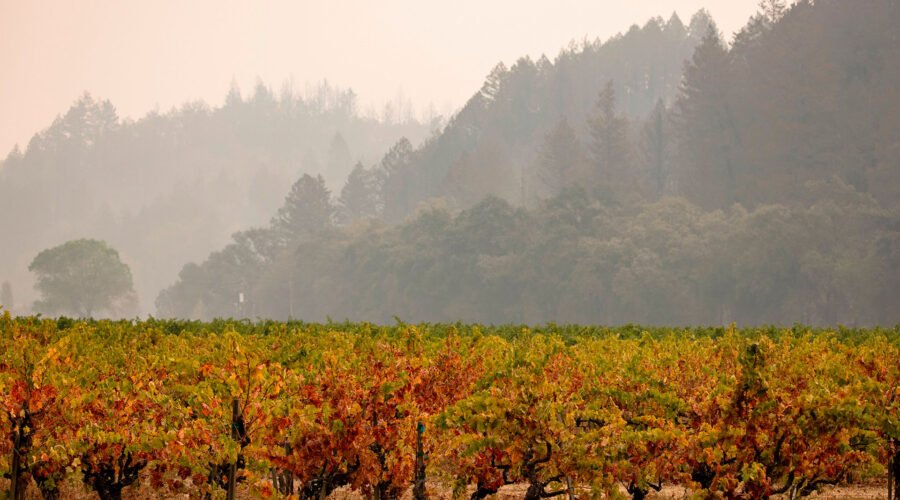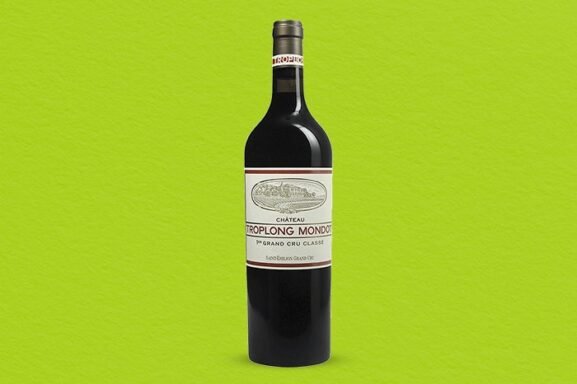Amid Smoke and Climate Change, Napa Embraces an Imperfect Red Grape
Petit Verdot is an important and late-ripening variety in both Bordeaux and the Napa Valley, mostly used as a blending grape in Cabernet Sauvignon-dominant wines. Known for its dark color, thick skin, high tannin content and spicy intensity, it is one of the most expensive grapes per ton, which is a direct correlation to its scarcity.
Over the past few years, winemakers have come to rely heavily on this grape because of its intensity and dark color. But that doesn’t mean Petit Verdot is without its challenges like, yes, the intensity, deep hue, and worst of all, propensity to soak in smoke.
Petit Verdot is extremely prone to smoke taint, which has been a growing problem of late, most notably in 2020.
“In 2020, the [Glass] fire did not get to our property, and thanks to the wind direction we didn’t have a lot of smoke, says Bryan Kane, who makes a 100% Petit Verdot for Howell Mountain Vineyards. “We did not get much smoke influence on the grapes, except for Petit Verdot — it’s a smoke soaker — so we don’t have any 2020 [vintage], but the rest of the vintage was one of our best ever overall.”
The Australian Wine Research Institute (AWRI) has published studies in relationship to baseline levels of the phenolic compounds (health-benefitting phytochemicals) associated with smoke taint, and varieties like Petit Verdot and Syrah already produce high concentrations of these compounds, which means you’re most likely to taste the smoke in these grapes than others.
“Our Petit Verdot is approachable and very complex and aromatic, with a more floral profile,” says Laura Diaz Munoz, winemaker and general manager of Ehlers Estate in St. Helena, California. “It is true that Petit Verdot, like Syrah, has a propensity to express smoke taint even at lower levels of exposure, as they produce and accumulate the same compounds even when not exposed to smoke.”
Because of this, winemakers like Diaz Munoz say they will analyze for smoke taint markers even during years when fires aren’t a threat, hoping to create a database of base levels for her varieties in her specific site, so she’s able to make more informed decisions when grapes are exposed to smoke.
Still, its charms tend to outweigh its challenges.
“It’s a nice somm wine,” notes Bryan Kane. “We tend to get even berry size at elevation, the color is fantastic, it’s purple in tank right from the beginning and the tannins are why people use it in blends. You don’t need a lot of it to get the structure.”

Karen Williams, owner of Acme Fine Wines in St. Helena, explains further.
“The namesake ‘petit’ is associated with the small berries which have higher skin-to-juice ratio, which results in more tannins and deeper hues.”
At her wine shop, she doesn’t often have requests for varietal Petit Verdot, though she has carried some in the past, including Cerro, made by Derek Beitler and sourced from the Cerrito Vineyard in Rutherford, which Williams describes as “not for the faint of heart,” and another from Gibbs sourced in Yountville.
“When we sit down to taste with winemakers here in Napa,” she continues, “we commonly hear that within their spice rack of blending varieties, Petit Verdot carries a similar gustatory job as black pepper. Too much is overbearing and can mask the delicate nuances.”
Jarvis Estate on Atlas Peak also produces a 100% Petit Verdot, as does Boeschen Vineyards and Mira Winery, Thirty-Seven, St. Supéry, Battuello, DRNK and Decades5. It also makes up a sizable percentage of iconic wines, including Beaulieu’s Georges de Latour Private Reserve and Dominus Estate.
There are roughly 700 acres of Petit Verdot in the Napa Valley, according to the 2020 California Grape Report published by the California Department of Food and Agriculture. Compare that to the approximately 21,000 acres of Cabernet Sauvignon, the region’s dominant grape.
“Petit Verdot is a late-ripening variety,” confirms Diaz Munoz. “Farming-wise, that is the more challenging aspect, on top of the yield variability due to its being overly sensitive during flowering, to humidity or winds. Flowers can fail to develop, and yields drop substantially some years.”
But, if conditions are good during flowering, Diaz Munoz says they can get the opposite — high yields and less concentration if they don’t drop fruit. Since Petit Verdot produces three clusters per shoot, it’s even more important that yields are adjusted.
All the coddling required of this variety — on top of climate change and fires — means Petit Verdot needs to be grown in the right place and given the right attention to be worthwhile, which is why there is so little of it in a place like the Napa Valley and why it costs so much per ton.
Still, some will find it worth the hassle and persist. Diaz Munoz, for one, feels good about the winery’s estate site and plans to continue growing it and showcasing it in a varietal bottling, even if that means contending with smoke taint.
“Our soils have between 35 to 65% gravel, which allows good drainage,” she explains. “We are in the narrowest point in the valley, with soils that are not as deep. Mixing this up with warm temperatures and good drainage, we get a little bit of stress in the vines that is beneficial to achieve full ripeness.”
The Ehlers Estate Petit Verdot ripens properly in these conditions and achieves good color, softer tannins and more floral, fruity aromatics. The two blocks on site are the last ones picked, usually in late October, tacking on additional risk.
But if you want to try something different, something intensely colored and robust, try a Petit Verdot on its own. There may be fewer chances to do so down the road.



